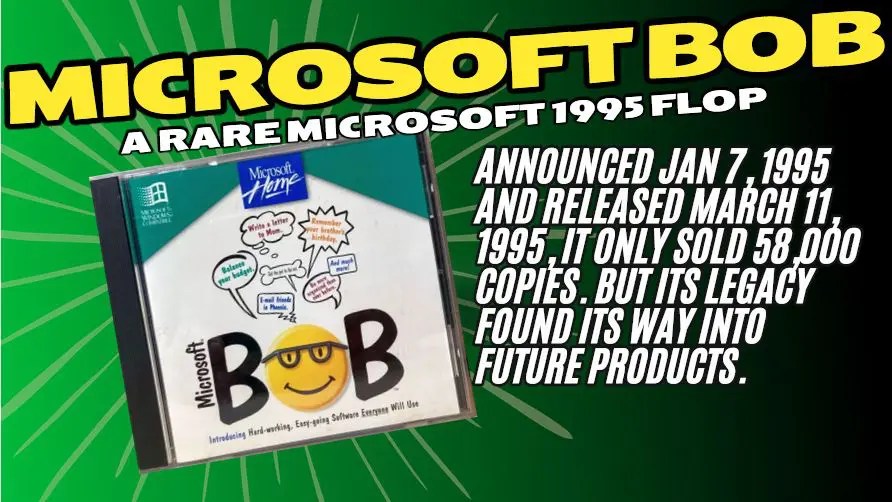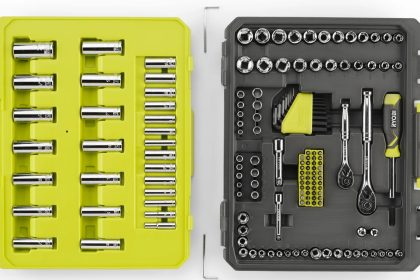It was January 1995. Microsoft was riding high. Windows 3.1 had sold well. The interim replacement, Windows 3.11, was selling well. The industry was abuzz for the upcoming Windows 95, expected sometime later in the year. Microsoft was in a golden era, a time when nothing could go wrong for them. And then they released Microsoft Bob. They should have named it Microsoft Bomb, because it bombed. But if you take one letter out of Bomb, you get Bob. So they almost got it right.
What was Microsoft Bob?A rare flop for Microsoft, Bob only sold 58,000 copies. That’s not counting the copies they hid in Windows XP to waste space on the CD.Microsoft Bob was a replacement user interface for Windows for novice computer users, replacing the conventional Program Manager or Explorer interface with something friendlier. Announced in early January 1995 and released March 11, 1995, Microsoft quietly discontinued it in 1996, just about a year later.
Microsoft Bob presented screens showing a house, with rooms that the user could visit containing familiar objects corresponding to computer applications, such as a desk with pen and paper and a checkbook. Clicking on the pen and paper would open the system’s word processor. Cartoon characters like a cartoon dog named Rover provided guidance using speech balloons.
The media criticized Microsoft Bob and its users didn’t like it much either. But elements of it appeared in later, more successful products, such as Office 97’s virtual assistants and the Windows XP search companion.
Microsoft Bob includes various productivity applications like a finance application and a word processor.
Bob had the ability to install new applications, but because the product failed, Microsoft only ever released one add-on application package, Microsoft Great Greetings.
What went wrongAlthough a Consumer Electronics Show demonstration was met with generally positive reactions, reviewers generally derided the software, and Microsoft Bob became one of Microsoft’s more visible product failures.
According to PC Data, Microsoft Bob only sold 58,000 copies—far short of Microsoft’s estimate that it would sell millions as had Microsoft Works and Encarta. Despite being discontinued just one year after launch, Microsoft Bob continued to be sharply criticized in reviews and popular media.
Part of the problem was that Bob was slow and resource-hungry unless you had a very fast machine. But novices weren’t likely to buy the most expensive PC on the market. In 2017, Melinda Gates, Bill Gates’ ex-wife and the product’s marketing manager, acknowledged that the software “needed a more powerful computer than most people had back then.” Modern analysis backs this up. When running Bob on a Pentium-class machine, the software becomes more tolerable.
PC World magazine ranked Microsoft Bob #7 on its list of the 25 worst tech products of all time. CNET ranked it the number-one worst product of the decade. Time magazine listed it among the 50 worst inventions, calling Bob “overly cutesy” and an “operating system designed around Clippy.”
Microsoft Bob’s legacyMicrosoft included an encrypted copy of Bob on Windows XP installation CDs to waste space to discourage piracy. Consuming an additional 30 megabytes on the disc in the era of dial-up internet access might deter users with 56 kbit/s modems from attempting to download the software illegally. It sounds like an urban legend but former Microsoft engineers have confirmed its presence on the CD.
Microsoft graphic designer Vincent Connare designed the typeface Comic Sans when he noticed that Rover’s speech was displayed in Times New Roman, which seemed inappropriate for a cartoon dog. Although Connare’s font did not appear in the final release of Microsoft Bob because its characters did not fit within any of the typographical grids, it later found its way into Windows 95 and future Windows releases. It’s somehow appropriate that the most derided font in Windows was an outtake from Microsoft Bob.
David Farquhar is a computer security professional, entrepreneur, and author. He started his career as a part-time computer technician in 1994, worked his way up to system administrator by 1997, and has specialized in vulnerability management since 2013. He invests in real estate on the side and his hobbies include O gauge trains, baseball cards, and retro computers and video games. A University of Missouri graduate, he holds CISSP and Security+ certifications. He lives in St. Louis with his family.












